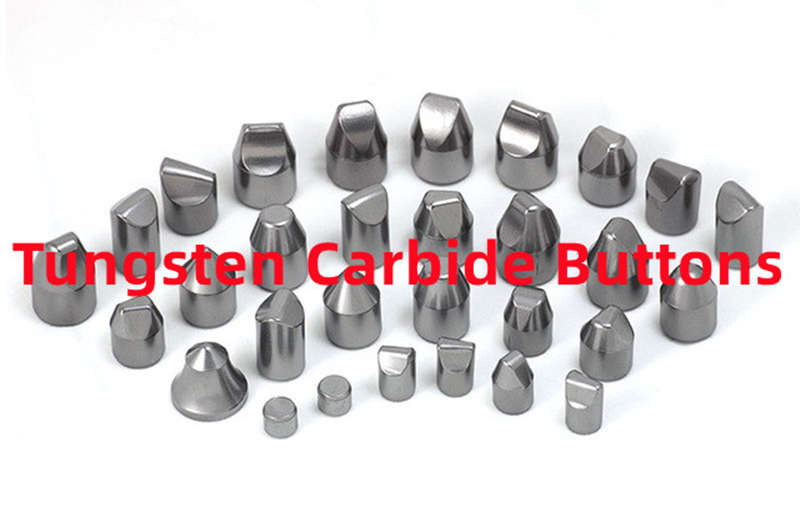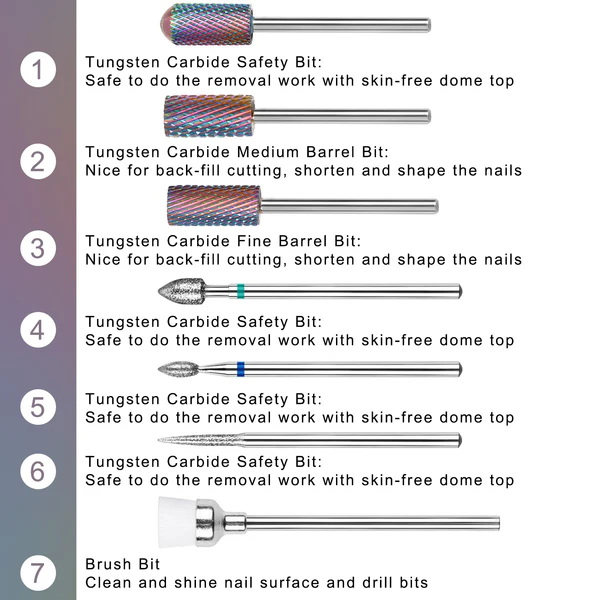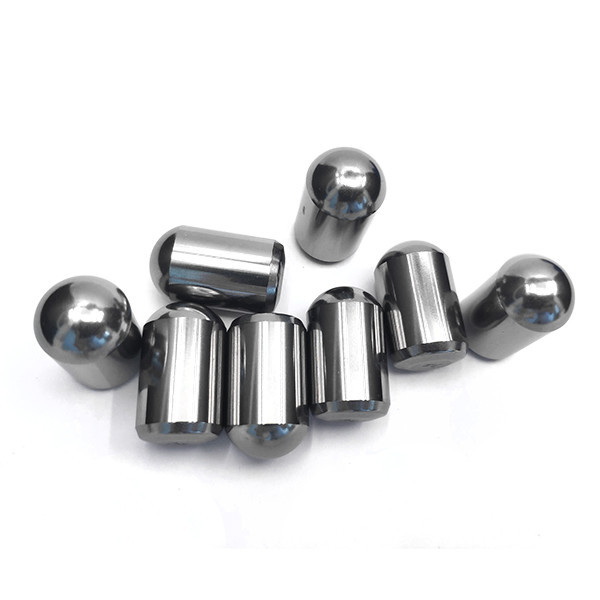Content Menu
● Material Properties Enabling Industrial Dominance
● Advanced Boron Carbide Production Techniques
>> 1. Carbothermal Refinement Process
>> 2. SHS (Self-Propagating Synthesis) Breakthroughs
● Mining & Drilling Implementations
>> ▣ Wear Components Revolution
>> ▣ Cutting System Innovations
>> ▣ Radiation Management Solutions
● Global Market Analysis
● Technical Comparison: B₄C vs Alternatives
● Future Production Frontiers
>> 1. Additive Manufacturing:
>> 2. Nanostructured Composites:
>> 3. Green Synthesis:
● Conclusion
● FAQ
>> 1. How does B₄C particle size affect drilling performance?
>> 2. What limits B₄C adoption in mainstream tools?
>> 3. Can B₄C coatings withstand sulfide ore corrosion?
>> 4. How do B₄C prices compare regionally?
>> 5. What's the innovation in B₄C recycling?
● Citations:
Boron carbide (B₄C), ranking third in hardness after diamond and cubic boron nitride, has transformed heavy industry tooling through its unique combination of physical properties. This ultra-hard ceramic (28-35 GPa Vickers hardness) now dominates 23% of the advanced abrasives market, particularly in extreme mining environments.

Material Properties Enabling Industrial Dominance
Structural advantages over traditional materials:
- Crystal structure: Rhombohedral lattice with B₁₂ icosahedra enabling exceptional shear resistance
- Thermal conductivity: 30-42 W/m·K (superior to steel) prevents heat buildup during drilling
- Chemical inertness: Resists acids (except HF) and molten metals up to 1,000°C
Advanced Boron Carbide Production Techniques
The $1.2B global boron carbide market relies on evolving manufacturing technologies:
1. Carbothermal Refinement Process
Industrial-scale optimization:
- Raw material preparation:
- B₂O₃ purity ≥99.5%
- Carbon black with ≤0.5% ash content
- Furnace design:
- Graphite electrode arc furnaces (3-6 MW capacity)
- Automated temperature zoning (1,700°C preheat → 2,200°C reaction)
- Post-processing:
- Jet milling to achieve D50=3-5μm particles
- Acid leaching (HCl/HNO₃) removes metallic impurities
Production metrics:
- Energy consumption: 8-12 kWh/kg
- Yield efficiency: 82-86%
- Typical contaminants: Free carbon (1.8-2.5%), B₂O₃ (0.3-0.7%)
2. SHS (Self-Propagating Synthesis) Breakthroughs
Military-grade manufacturing:
- Reaction equation:
2B₂O₃ + 6Mg + C → B₄C + 6MgO (ΔH = -452 kJ/mol)
- Process parameters:
- Ignition temperature: 900-950°C
- Combustion wave speed: 5-8 mm/sec
- Product porosity: 45-55% (requires HIP treatment)
Quality enhancements:
- Mechanochemical activation: High-energy ball milling reduces ignition temp by 150°C
- Additive engineering: 2-4% SiC improves fracture toughness to 4.5 MPa·m1/2
Mining & Drilling Implementations
▣ Wear Components Revolution
Case study: Chilean copper mine slurry pumps
- Traditional setup: WC-Co liners (600h lifespan)
- B₄C upgrade:
- 3mm plasma-sprayed coating (HVOF)
- Service life: 2,100h (+250%)
- Maintenance cost reduction: $38/ton processed
Technical specifications:
- Abrasion resistance: 0.12 mm³/N·m (vs WC's 0.35)
- Impact strength: 2.8 J/cm² (unreinforced) → 5.1 J/cm² (SiC-whisker composite)
▣ Cutting System Innovations
Diamond-B₄C hybrid bits:
- Design architecture:
- PDC cutters (2-3mm) embedded in B₄C matrix
- Radial cooling channels (0.5mm precision)
- Field performance:
- Granite penetration rate: 12m/h (vs 7m/h for WC bits)
- Bit temperature: 280°C max (45% lower than conventional)
Ultrasonic drilling enhancements:
- Frequency: 20-40 kHz
- Amplitude: 15-25μm
- B₄C tool life: 120h continuous operation
▣ Radiation Management Solutions
Underground sensor shielding:
- Composite structure:
- 60% B₄C + 30% HDPE + 10% boron nitride
- 15mm wall thickness
- Performance:
- Neutron attenuation: 99.7% at 1 MeV
- Gamma ray reduction: 85% (Cs-137 source)

Global Market Analysis
2025-2030 projections:
| Segment | CAGR | Key Drivers |
| Drilling tools | 11.8% | Shale gas exploration |
| Wear parts | 9.2% | Mining automation |
| Nuclear shielding | 14.3% | Uranium mining expansion |
Regional adoption:
- North America: 38% market share (fracking demand)
- Asia-Pacific: 29% (coal bed methane projects)
Technical Comparison: B₄C vs Alternatives
Economic analysis (per kg):
| Material | Cost | Machining Difficulty | Recyclability |
| Boron carbide | $220 | 9/10 | 40% |
| Tungsten carbide | $180 | 6/10 | 65% |
| Synthetic diamond | $950 | 10/10 | 5% |
Environmental impact:
- B₄C production CO₂ footprint: 18kg/kg vs WC's 42kg/kg
- End-of-life recovery: B₄C grit reuse in abrasive waterjets
Future Production Frontiers
1. Additive Manufacturing:
- Binder jetting with 55% B₄C + 45% phenolic resin
- Complex geometries: lattice structures for impact absorption
2. Nanostructured Composites:
- Core-shell B₄C-TiB₂ nanoparticles (12-18nm)
- Fracture toughness improvement: 300%
3. Green Synthesis:
- Solar-assisted SHS reduces energy use by 68%
- Biomass-derived carbon sources (coconut shells)
Conclusion
Boron carbide's dominance in mining tooling stems from continuous production innovations and unmatched material properties. With drill bit manufacturers reporting 22% operational cost reductions through B₄C adoption, coupled with emerging eco-friendly manufacturing methods, this material is poised to capture 35% of the advanced abrasives market by 2030.

FAQ
1. How does B₄C particle size affect drilling performance?
Optimal D90=8μm provides 12% higher density in sintered parts compared to 15μm grades.
2. What limits B₄C adoption in mainstream tools?
High sintering costs ($150/kg for HIP vs $40/kg for WC) restrict use to premium applications.
3. Can B₄C coatings withstand sulfide ore corrosion?
Yes – 500μm coatings show ≤0.01mm/year erosion in pH 2-3 environments.
4. How do B₄C prices compare regionally?
Chinese production costs ($185/kg) undercut Western manufacturers ($240/kg) due to energy subsidies.
5. What's the innovation in B₄C recycling?
Microwave-assisted recovery achieves 92% purity through selective MgO vaporization at 1,800°C.
Citations:
[1] https://www.3m.co.za/3M/en_ZA/p/d/b49000148/
[2] https://www.nanotrun.com/article/the-properties-and-application-of-boron-carbide-i00282i1.html
[3] https://www.nanotrun.com/article/five-important-methods-of-boron-carbide-production-i00108i1.html
[4] https://www.preciseceramic.com/blog/an-overview-of-boron-carbide-ceramics.html
[5] https://en.wikipedia.org/wiki/Boron_carbide
[6] https://www.washingtonmills.com/sites/default/files/2019-02/2015_industrial_boroncarbide.pdf
[7] https://patents.google.com/patent/US20150299421A1/en
[8] https://www.britannica.com/science/boron-carbide
[9] https://d-nb.info/1354419669/34
[10] https://patents.google.com/patent/US4828052A/en
[11] https://patents.google.com/patent/US7597159B2/en
[12] https://www.huanghewhirlwind.com/Applications-and-Advantages-of-Cubic-Boron-Carbide-Powder.html
[13] https://www.azom.com/article.aspx?ArticleID=5809
[14] https://shop.zak.ua/en/karbid-boru-kharakterystyky-vykorystannia-ta-perspektyvy/
[15] https://www.cutwel.co.uk/boron-carbide-hand-lapping-tool-cutwel-pro-boron-carbide-tool-orion
[16] https://www.kawanlama.com/blog/ulasan/13-jenis-mata-bor-ukuran-beserta-fungsinya
[17] https://www.istockphoto.com/photos/carbide-bit
[18] https://www.tokopedia.com/sandblasting/boron-carbide-nozzle-4mm
[19] https://www.lummi.ai/s/3d/boron%20carbide%20applications
[20] https://patents.google.com/patent/US7517491B2/en
[21] https://etheses.bham.ac.uk/3976/1/Murray13MRes_(2).pdf
















